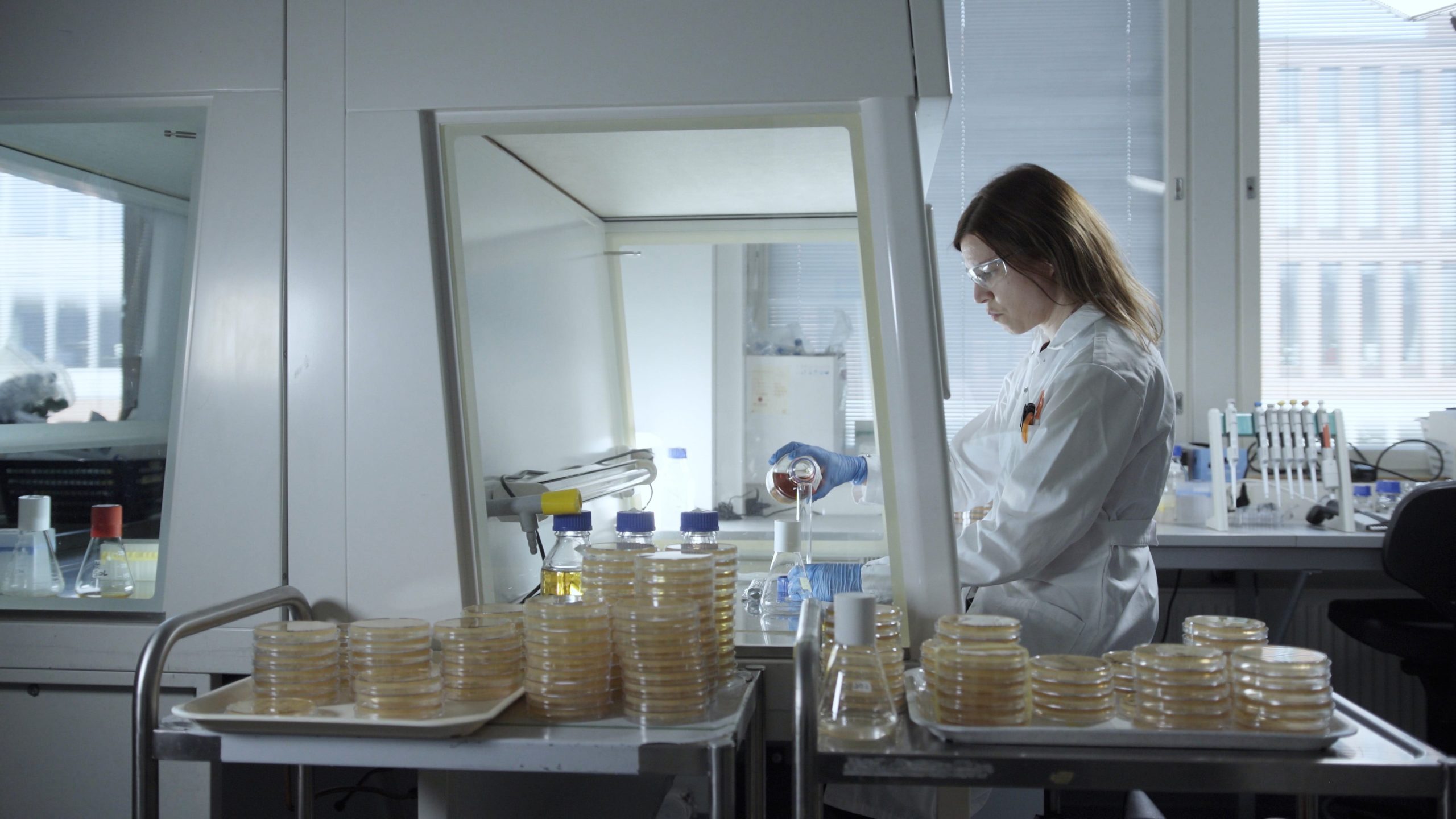
Finnish science and industry join forces to develop microbial cell factories in the SynbioPro project
Projects NewsSynthetic biology enables the use of living micro-organisms in the manufacture of materials and chemicals. VTT Technical Research Centre of Finland, the University of Tampere, Neste, Fortum, Kemira, Mirka and Olfactomics are joining forces to develop precursors for everyday plastic objects out of renewable raw materials. The SynbioPro project, which is one of the first projects in the ExpandFibre Ecosystem, utilises methods of synthetic biology. The project is of great importance for the Finnish industry in its path to more sustainable practices and attempts to disengage from fossil-based raw materials.
Currently, fossil raw materials are refined to create building blocks for the manufacture of plastics, textiles, nappies, and other everyday products. Replacing these fossil raw materials with renewable ones is a difficult undertaking. Finnish science and industry are combining their forces in the SynbioPro project to develop new biotechnical refinement processes to tackle these challenges. In this two-year project coordinated by VTT, basic chemicals needed in industrial manufacturing will be produced by microbes from agricultural and forestry effluents.
The technology being developed in the project is based on the ability of yeast cells and bacteria to function as biological factories. “Microbial cell factories can be harnessed to produce our future materials. The power of nature to synthesize and its rich chemistry gives us possibilities we have never seen before,” says the head of the project, Merja Penttilä, Research Professor for Biotechnology at VTT.
The goal of the project is to modify microbes to enable them to alter agricultural and forestry effluents, like cellulose, into basic chemicals used as precursors in the plastics industry, such as acrylic acid and adipic acid. Materials produced from these acids are a significant part of our everyday lives, and the markets for both add up to nearly 20 billion euros per year globally.
In addition to VTT, participants in the SynbioPro project include the University of Tampere (led by Ville Santala, Associate Professor for Biotechnology) in a research role, and Neste, Fortum, Kemira, Mirka and Olfactomics in the role of developing industrial applications.
SynbioPro is one of the first projects in the ExpandFibre ecosystem. Synthetic biology makes it possible to utilise substances such as the hemicellulose sugars and lignin mentioned in the ExpandFibre roadmap in the manufacture of bio-based chemicals. In addition, SynbioPro is linked to the Veturi project of Neste, which is developing sustainable and globally scalable raw material and technology solutions to produce transport fuels as well as chemicals and polymers. The project is funded by the Business Finland Bio and Circular Finland programme, which see synthetic biology as an important enabler of circular economy.
When successful, the project will greatly affect the way materials of the future are produced. While disengaging energy production from fossil-based raw materials is already now a megatrend, the next one will be the production of materials using new environmentally friendly technologies. SynbioPro has an important role in the development of innovative biotechnological production routes not only in Finland but also on international level.
Read the full press release on the VTT website (in Finnish): Suomen tiede ja teollisuus kehittävät Suomeen mikrobitehtaita
More information:
VTT Technical Research Centre of Finland:
Outi Koivistoinen, Senior Scientist and coordinator of the SynbioPro project
Tel. +358 40 5844149, outi.koivistoinen@vtt.fi
Merja Penttilä, Research Professor and Head of the SynbioPro project
Tel. +358 40 7000163, merja.penttila@vtt.fi
Photo: Senior Scientist Outi Koivistoinen is engineering yeast cells to produce bio-based source materials in the VTT laboratory. (Source for photo: VTT)